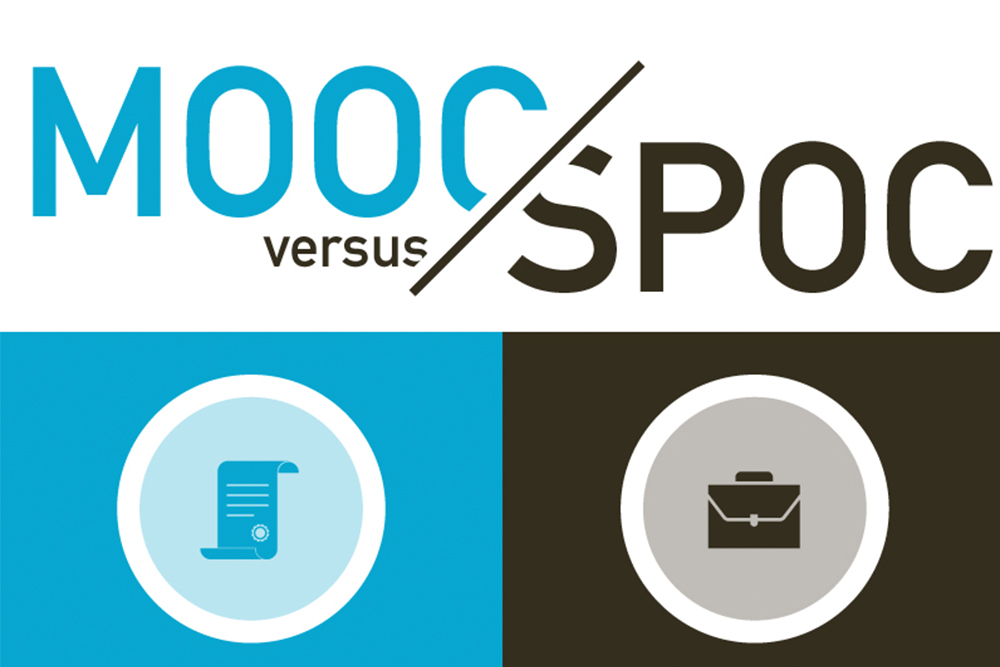Online vs. In-Person Executive Education Programs6 min read
Reading Time: 5 minutesReading Time: 5 minutesThink back to your first days in a classroom as a child. Do you remember looking around and noticing how different your classmates were from one another? Some of them probably loved to doodle. Others loved to talk over everyone else. Still others barely spoke at all, but always managed to impress the teacher.
Back then, surrounded by a variety of uninhibited personalities, we first learned that education isn’t one-size-fits-all. As adults, we’re conscious of this fact – and yet, many of us still wonder why some schools, programs or educational setups work well for our friends but not for us. We enroll in courses that sound good on paper without taking the time to evaluate them for our own needs. We become enamored with the convenience of online courses without understanding the pitfalls.
You’re probably here because you want to embark on an executive education journey and are wondering whether to enroll in an online or in-person program. It’s a tough choice, but now’s the time to think hard about your goals. Why type of program will help you reach them?
In this post, we discuss the strengths and weaknesses of online and in-person executive education programs. We also offer a few tips at the end to help guide your decision-making.
Online executive education: Is convenience your top priority?
Online courses are more within reach than ever before. They’ve become a positive and widespread addition to the education sector, bringing better educational opportunities to more people around the globe. When it comes to executive education, top name schools extend accessible programs and certificate courses to those who are eager to advance their knowledge. This has made education less about exclusivity or strict acceptance requirements and more about the drive to learn.
Perhaps the biggest draw of online courses is the convenience and flexibility factor. Unless you choose to enroll in a university that’s located next door to your workplace or home, you would be hard-pressed to find more convenient executive education than what’s offered in an online course.
Despite having this key advantage, online courses have their pitfalls. Just because you’re spending less time commuting to a class doesn’t mean you’ll be spending less time overall on your course. Online courses tend to have less personalized guidance and fewer clarifying demonstrations, making it harder to grasp difficult concepts. You may end up spending more time studying in an online program (or even wrangling with technology and online course systems – both essential for communication and participation in the digital education world).
What’s more, studies have shown that students enrolled in online courses generally perform worse than those enrolled in in-person programs. E-learning also has the highest abandonment rate. That’s not to mention the lack of genuine connections normally forged inside a classroom. The absence of structured networking opportunities may be detrimental to some executives who seek these interpersonal relationships in order to excel.
Finally, online certificates are not as highly valued by many employers. That doesn’t mean online course certificates aren’t a positive addition to a CV, but rather that in-person courses from accredited universities – with their loftier fees and higher commitment threshold – demonstrate a solid commitment to learning and serve as a dependable badge of skill advancement.
MOOCs and SPOCs: Not all online courses are created equal

It’s also worth noting that there are two types of online courses available: Massive Open Online Courses (MOOCs) and Small Private Online Courses (SPOCs).
While MOOCs are widely accessible and host thousands – even hundreds of thousands – of participants at the same time, they are notorious for their high abandonment rates. SPOCs, on the other hand, generally carry more merit as they the most similar to in-person courses. The hallmark of a good SPOC is real-time interaction, plenty of practical work and team projects. With restricted access (anywhere from a few participants to a few hundred), heftier tuition fees and more structured virtual classrooms, SPOCs have grown significantly in the last decade.
In-person executive education: Are you ready for intensity and value?

Let’s think back to that childhood classroom again: Do you remember it vividly? Most likely, your earliest school days felt ceremonious. Entering a classroom is a ritual, and for some of us, it remains an ideal place to focus on our intent to learn. A similar concept is the act of training inside of a gym; entering the weight room tells our brain and body to focus on the task at hand.
This focus and structure, then, is a major advantage of in-person executive education programs. Even more importantly, a set place of learning affords plenty of interaction – both planned and unplanned – that stimulates the brain. In-person executive education programs also come with high-value connections such as alumni networks and networking avenues (it’s worth noting that some online courses do offer access to alumni networks).
Another benefit of in-person executive education programs is their undeniable appeal to employers and hiring managers. Classroom programs are instantly recognized by employers as significant and beneficial. This is in contrast to online courses, which may still be met with some degree of skepticism depending on the course. This is a changing trend that’s worth looking into further depending on your specific case.
The downside of in-person executive education is the possible lack of convenience. If you enroll in a course out of your hometown (or even on a different continent), you’re required to make travel and accommodation arrangements. You may need to take time off work and do some financial planning. Budget becomes more of a concern with in-person courses, as they are often more expensive. The increase in price, however, accounts for the practical, present and beneficial nature of classroom executive programs.
Choosing between online and in-person executive education programs
Now that you’ve had a chance to consider the pros and cons of both online and in-person executive education, take a moment to consider your unique learning circumstances. Have an honest conversation with yourself in order to put yourself in the right frame of mind to learn.
- Be realistic with how you learn. Do you tune out quickly or have trouble sticking to a schedule without motivation or incentive? Are you tech savvy? Do you crave classroom interaction?
- Decide what is most important to you. Are you learning a new skill to perform better, or are you trying to make a career move and impression on employers?
- Explore options and keep an open mind. Search hundreds of reputable online and in-person courses on Coursalytics and narrow down your top choices. Be sure to get as detailed as possible with the pros and cons of each.
Whichever type of executive education course you decide to take, we know it will be a great springboard to lifelong learning – and hopefully, to your next career advancement. Start your search today on Coursalytics, happy hunting!




